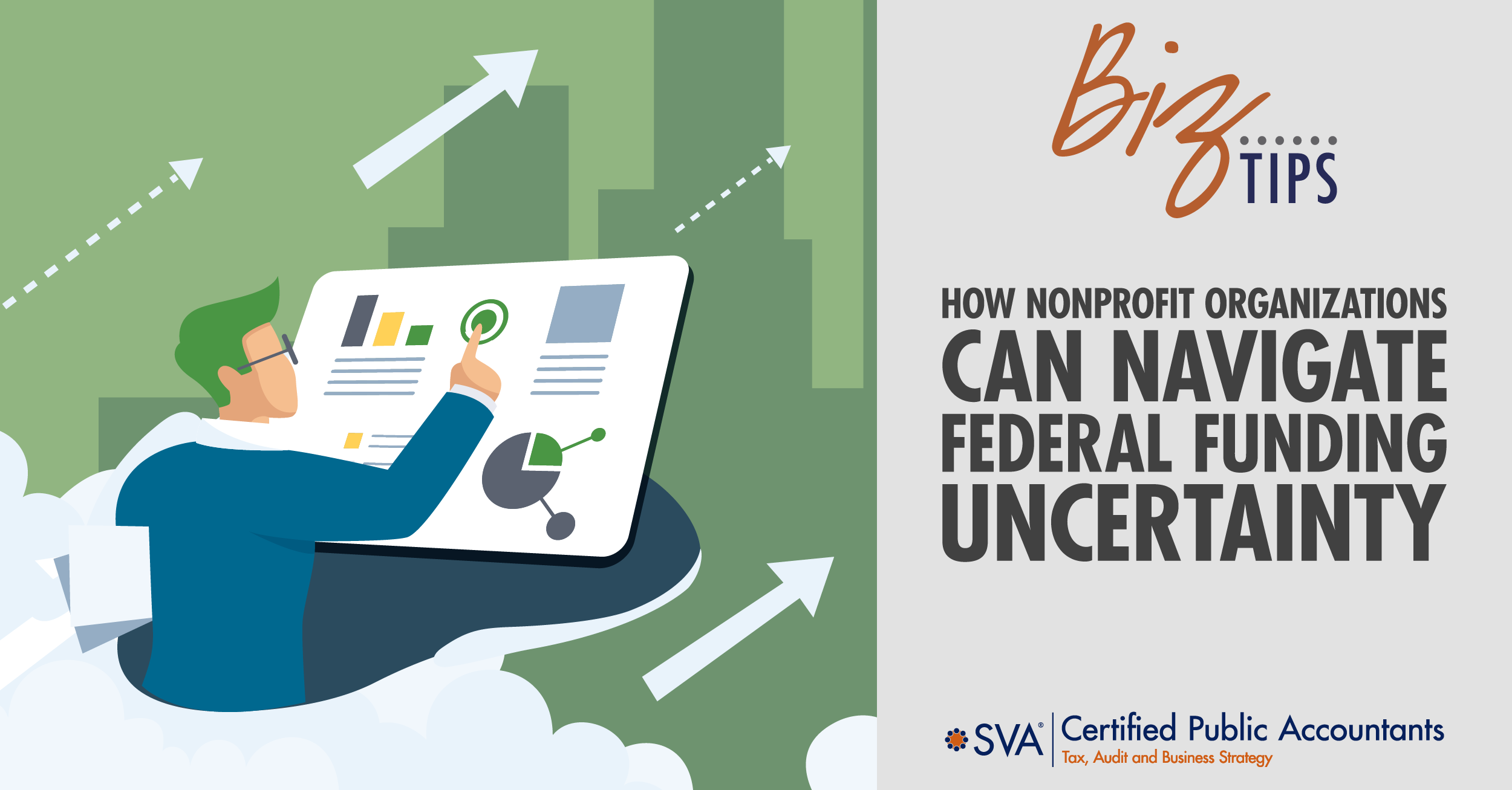If you work in the nonprofit sector, you’ve likely felt the growing uncertainty around federal funding.
Nonprofit organizations rely on federal grants, contracts, and cooperative agreements to keep vital programs running. But with budget decisions shifting unpredictably, nonprofit organizations are left wondering:
- Will the funding continue?
- Should we plan for cuts?
- How do we keep our operations running if the money stops flowing?
While no one has a crystal ball, there are steps nonprofit organizations can take to prepare for potential funding disruptions.
Common Concerns for Nonprofit Organizations Receiving Federal Funding
Nonprofit organizations face a range of challenges when it comes to federal funding, and uncertainty only magnifies them. Here are some of the biggest concerns:
| Funding Delays and Cuts |
Government shutdowns, policy changes, and shifting budget priorities can slow or even halt payments, disrupting cash flow. |
| Compliance and Reporting Burdens |
Federal dollars come with strict reporting requirements, and missing a step could result in penalties—or loss of funding altogether. |
| Over-Reliance on One Source |
Many nonprofit organizations depend heavily on federal money, making them vulnerable when cuts occur. |
| Confusing Policy Changes |
Grant criteria, contract terms, and reporting rules can change suddenly, forcing organizations to scramble to stay compliant. |
| Matching Fund Challenges |
Some grants require nonprofit organizations to secure additional funds from private donors or other sources, which can be tough in uncertain economic times. |
With so many unknowns, it’s easy to feel stuck. But rather than waiting for the next funding announcement, nonprofit organizations can take proactive steps to strengthen their financial footing.
What Nonprofit Organizations Can Do to Stay Prepared
While no one can predict exactly what will happen with federal funding, there are ways to lessen the impact of uncertainty. Here are five things nonprofit organizations can consider:
1. Stay on Top of Reimbursements
If your organization operates under a cost reimbursement contract, where you pay expenses upfront and are reimbursed, submit support for all expenses incurred as soon as possible. Don’t wait until the next scheduled reimbursement cycle—push expenses through now to secure funds while they’re still available.
2. Diversify Revenue Sources
Depending too much on federal funding as the primary revenue source can put nonprofit organizations in a tough spot. Now is a good time to explore new fundraising strategies, such as:
- Expanding individual donor outreach
- Seeking corporate sponsorships
- Developing fee-based services or programs
- Applying for foundation or state-level grants
There are potential donors and funding sources that many organizations haven’t tapped into yet. Broadening your revenue streams can help create more financial stability.
3. Keep an Open Line of Communication with Grant Officers
If your organization receives federal funds, stay in close contact with your assigned grant officer or federal agency contact. If you receive a notice about potential cuts, reach out directly to clarify what’s happening. In many cases, local agency representatives have more up-to-date information than broad government announcements.
4. Strengthen Financial Oversight
In times of financial stress, cutting corners or making risky financial decisions can backfire. Keep internal controls in place and stay diligent about compliance, even when budgets are tight. Regular audits and strong financial management practices can help nonprofit organizations avoid trouble down the road.
5. Plan for "What If" Scenarios
Nobody wants to think about worst-case situations, but having a contingency plan in place is a must. Consider:
- Establishing a reserve fund for unexpected funding gaps
- Identifying programs that could be temporarily scaled back if needed
- Exploring alternative program models that don’t rely solely on federal dollars
- Assessing staffing needs and potential operational adjustments
A well-thought-out plan can provide a sense of direction if funding disruptions occur.
A Changing Landscape
The reality is that federal funding uncertainty isn’t new, but it feels more unpredictable than ever. For nonprofit organizations, staying informed, financially flexible, and proactive is the best way to weather the storm.
While no one has all the answers, nonprofit organizations can focus on what they can control—building strong financial systems, broadening funding sources, and being prepared for changes as they come.
In the meantime, organizations should continue advocating for their causes, supporting their communities, and finding creative ways to sustain their missions.
© 2025 SVA Certified Public Accountants

